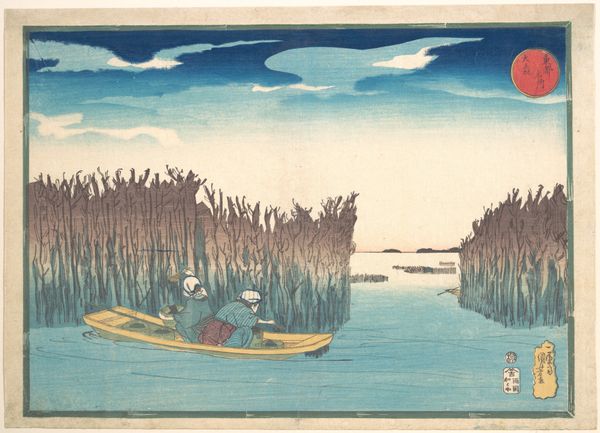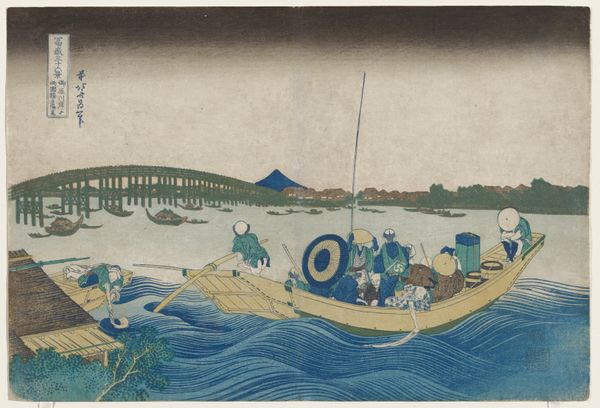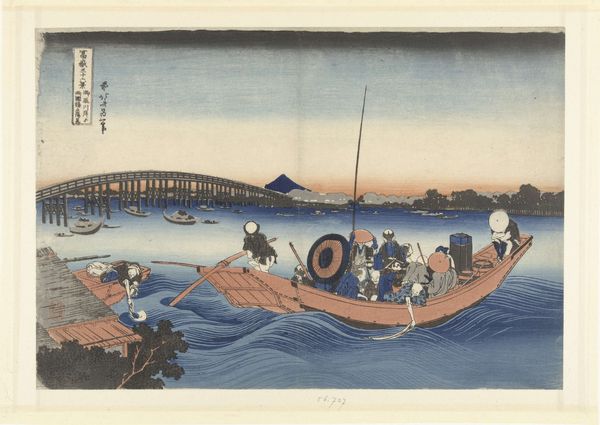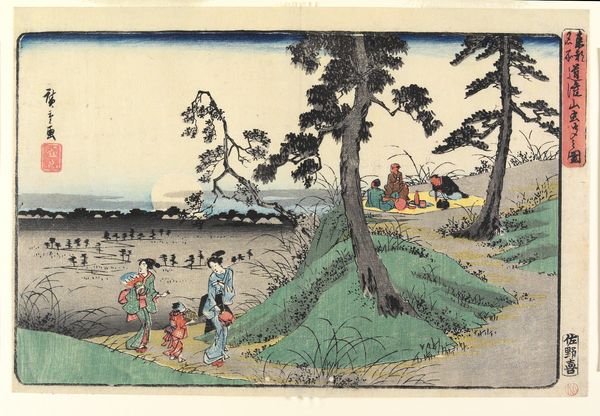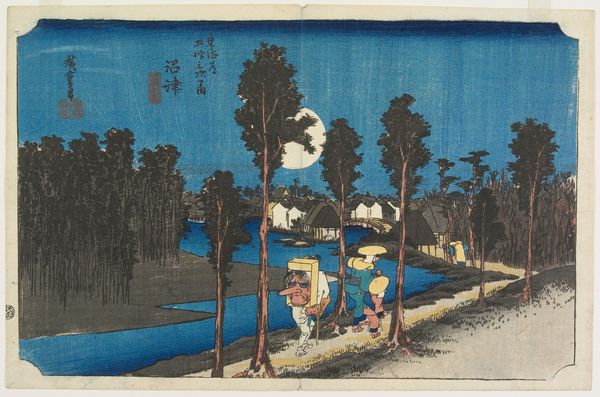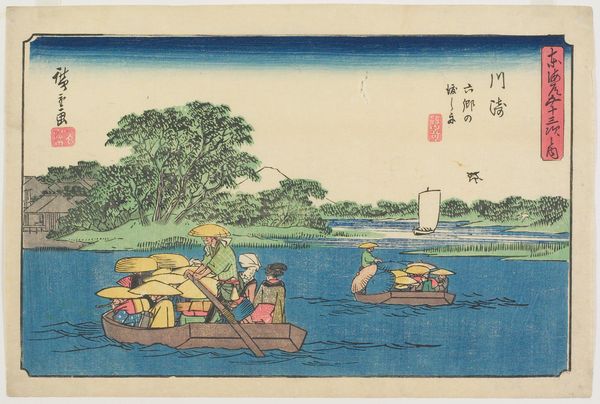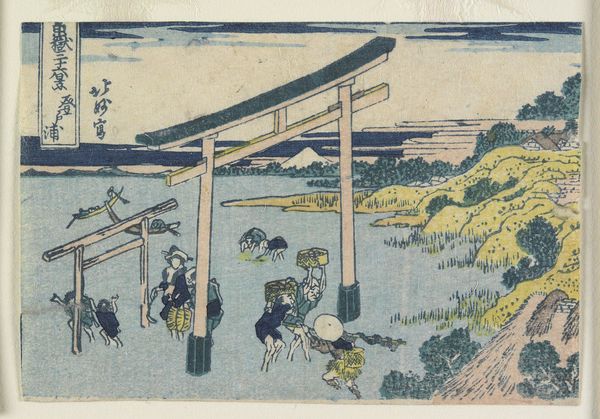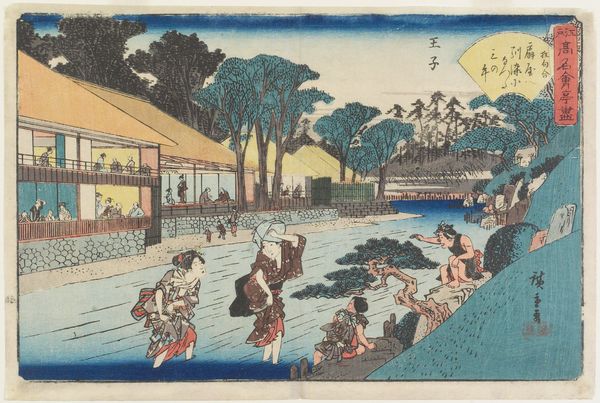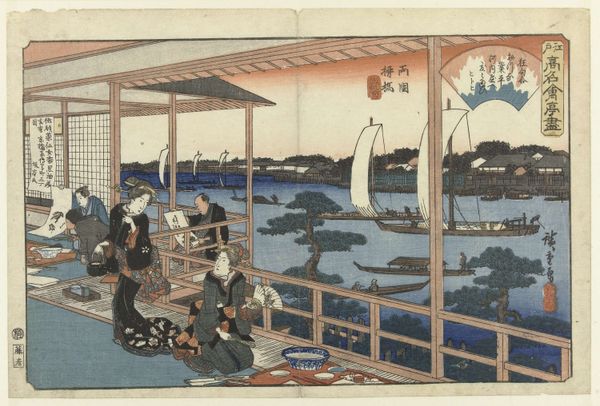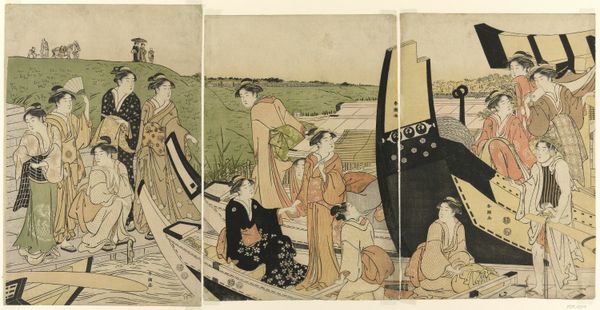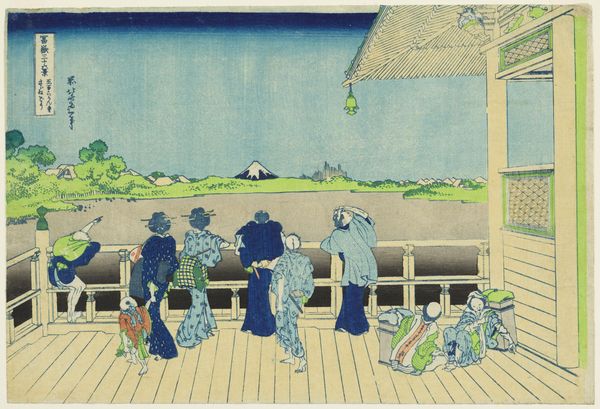
print, ink, woodblock-print
#
narrative-art
# print
#
asian-art
#
landscape
#
ukiyo-e
#
japan
#
form
#
ink
#
woodblock-print
#
line
Dimensions: 7 5/16 × 10 1/16 in. (18.5 × 25.5 cm) (image, sheet, horizontal chūban)
Copyright: Public Domain
Curator: Here we have Katsushika Hokusai's "Line-fishing in the Miyato River," a woodblock print created around 1833, and part of the collection here at the Minneapolis Institute of Art. Editor: The light in this piece is just striking. It almost feels like it's shimmering on the water, a really vibrant, pastoral scene. Curator: I think a key to understanding Hokusai is looking at the materials and labor involved in the creation of this Ukiyo-e print. Multiple craftspeople were involved in the wood carving and printing. Editor: Absolutely, and understanding that collaborative production opens up questions about authorship. What were the social conditions of the artists, the artisans? Were there political or class tensions at play? Look how many figures in boats populate this supposedly idyllic scene of line fishing; that level of detail emphasizes both individual exertion and collaborative endeavor. Curator: We can appreciate the complex carving techniques to render fine details, but consider the implications. This print was not meant for an elite audience. The very nature of Ukiyo-e allowed for mass production and distribution, reaching a wider segment of Edo society. This accessibility disrupts the idea of art existing solely as a commodity for the wealthy. Editor: I agree, but that wider distribution also speaks to cultural exchange and appropriation. How were these images consumed, not just within Japan, but later in the West? Who had access, who was excluded, and what biases did those interactions reinforce? Were certain bodies excluded or exoticized? Curator: It becomes clear how significant is the act of reproducing. Hokusai's work influenced not only the artistic output within Japan but across Europe. We have to trace the pathways of influence. Editor: The image prompts these larger discussions about artistic process, labor, dissemination, and reception. Understanding the layered social and historical contexts is critical to avoiding aestheticizing the past, of turning Ukiyo-e into some idealized past. Curator: This piece reminds us that the materiality of art is never separate from its message, and that production always exists within a complex system of exchange. Editor: And I think it's necessary to ask the crucial question: How does our contemporary position affect our viewing?
Comments
No comments
Be the first to comment and join the conversation on the ultimate creative platform.
